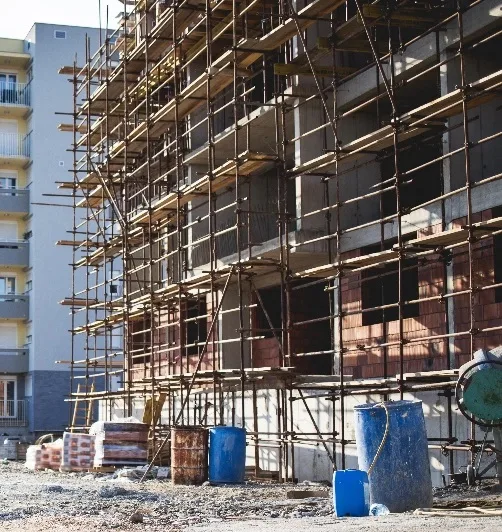The construction industry is always evolving, but the pace of change in recent years is nothing short of wild. Between new tech, smarter materials, and ideas that seemed sci-fi just a decade ago, contractors are stepping into a future that’s equal parts exciting and unpredictable. But what’s really changing the game, and what should contractors keep on their radar? Let’s dig into the essentials and where things are headed.
Smarter Sites, Smarter Builds
It’s no secret that construction sites are getting a tech upgrade. AI, IoT, and automation are no longer just buzzwords—they’re becoming the backbone of smarter building. Today’s job sites are all about interconnected systems that make everything from tracking materials to pouring concrete more efficient. Sensors embedded in equipment can now alert you when maintenance is due, cutting downtime and keeping projects on track.
But here’s the kicker: it’s not just about saving time. These systems are also making safety a top priority. With real-time alerts for potential hazards, contractors can finally start seeing injury rates go down. Even wearables for workers are stepping in, monitoring fatigue and environmental conditions. It’s a whole new world where tech has your back—and then some.
The New Gold Standard for Site Security
Let’s be real—protecting a site isn’t optional anymore. With expensive equipment, materials, and sensitive plans on the line, security has to be next-level. That’s where construction site monitoring security cameras are must-have. They’re not just there to catch someone sneaking onto your site at midnight (though they do that, too).
These systems now come with AI capabilities that detect unusual behavior and can even differentiate between a stray dog and an actual intruder. Some setups send alerts straight to your phone, letting you check in wherever you are. And it’s not just about theft—these cameras also help monitor workflow and ensure everyone’s following safety protocols. Imagine spotting a missed hard hat in real time or checking the progress of a pour while grabbing lunch. It’s like having eyes everywhere without the headache of being everywhere.
Heavy Machinery, Light Touch
For contractors, machinery is everything. But the machines themselves? They’re changing fast. Automation and robotics are redefining how we move dirt, raise steel, and finish interiors. Autonomous vehicles are already creeping into the industry, making site prep faster and more accurate than ever.
And let’s not forget anti-collision devices for cranes—a must when you’re working on complex urban builds with little room for error. These systems are all about precision, preventing accidents before they happen and keeping projects moving smoothly. It’s not just cranes, either; automation is trickling into everything from bulldozers to compactors.
But here’s the twist: instead of replacing human operators, these machines are enhancing them. With remote controls and smart tech, operators can handle multiple machines at once or work from a safer distance. It’s the perfect mix of human expertise and tech-driven efficiency.
Materials That Do More
Concrete, steel, and wood aren’t going anywhere, but they’re definitely leveling up. Self-healing concrete is one of the most talked-about innovations right now. Designed to repair its own cracks when exposed to moisture, this tech could make potholes and structural issues a thing of the past.
On the sustainability side, materials like cross-laminated timber and recycled plastics are stepping up. Builders are finding ways to repurpose materials that would’ve been landfill-bound a decade ago. Green roofs and solar-integrated facades are also becoming standard features, especially in urban projects where energy efficiency is a selling point.
The materials of the future aren’t just strong—they’re smart. Think glass that adjusts its tint based on sunlight or walls that regulate their own temperature. These innovations aren’t just cool—they’re practical, and they’re changing how contractors think about design from the ground up.
Designing for a Future That Thinks Ahead
The concept of “future-proofing” is becoming a cornerstone for contractors. This isn’t just about meeting today’s codes; it’s about anticipating what a building will need in ten, twenty, or even fifty years. Modular construction is a big part of this shift. By designing buildings with flexibility in mind, contractors can make future renovations or expansions easier—and less expensive.
Another game-changer is digital twin technology. These virtual replicas of physical buildings let contractors test changes, predict wear and tear, and even simulate disasters to see how a structure would hold up. It’s like having a crystal ball for every project you touch.
But future-proofing isn’t just about the structure. It’s about creating spaces that adapt to people. Think smart lighting that adjusts to the time of day or HVAC systems that learn your habits and fine-tune themselves. Contractors who embrace this mindset aren’t just building for now—they’re building for what’s next.
Wrapping It All Up
The construction industry is standing at a crossroads, but this isn’t a fork in the road—it’s a highway with endless lanes. Smarter tools, sustainable materials, and next-level security are shaping how contractors approach every project. The future isn’t just about keeping up—it’s about setting the standard. The contractors who embrace these changes aren’t just building structures; they’re building what’s next.

